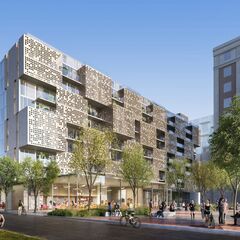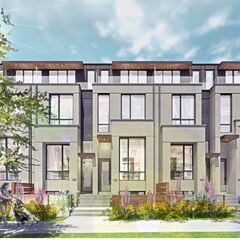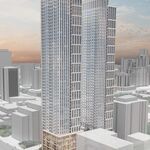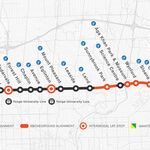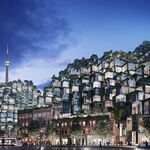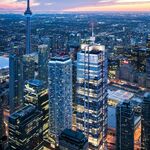Looming over the railroad tracks, the Tower Automotive Building remains an empty husk on Toronto's Sterling Road. To its south, the street still smells of chocolate, with the Nestle Canada factory churning out its confectionaries from what remains an industrial site. Walking up Sterling Road, it might be hard to believe that this area is becoming a locus of artist studios and galleries. But it is. Soon to become the new home of the Museum of Contemporary Art_Toronto_Canada (MOCA), the Tower Automotive Building will be at the heart of a community recently branded as the Lower Junction Triangle, a mixed-use neighbourhood that's emerging from the vacant brownfields sites that surround the tower.
With real estate prices continuing to rise throughout the city, the overlooked neighbourhood halfway along Bloor between Dundas West and Lansdowne subway stations, has become a hub for artists and gallerists. In some places it might still look like the middle of nowhere, but it's already a cultural centre of the city. It's here that some of Canada's prominent contemporary artists—including painter and filmmaker Kent Monkman—now house their galleries, attracted by the comparatively area'a low rents and ample, loft-like industrial spaces.
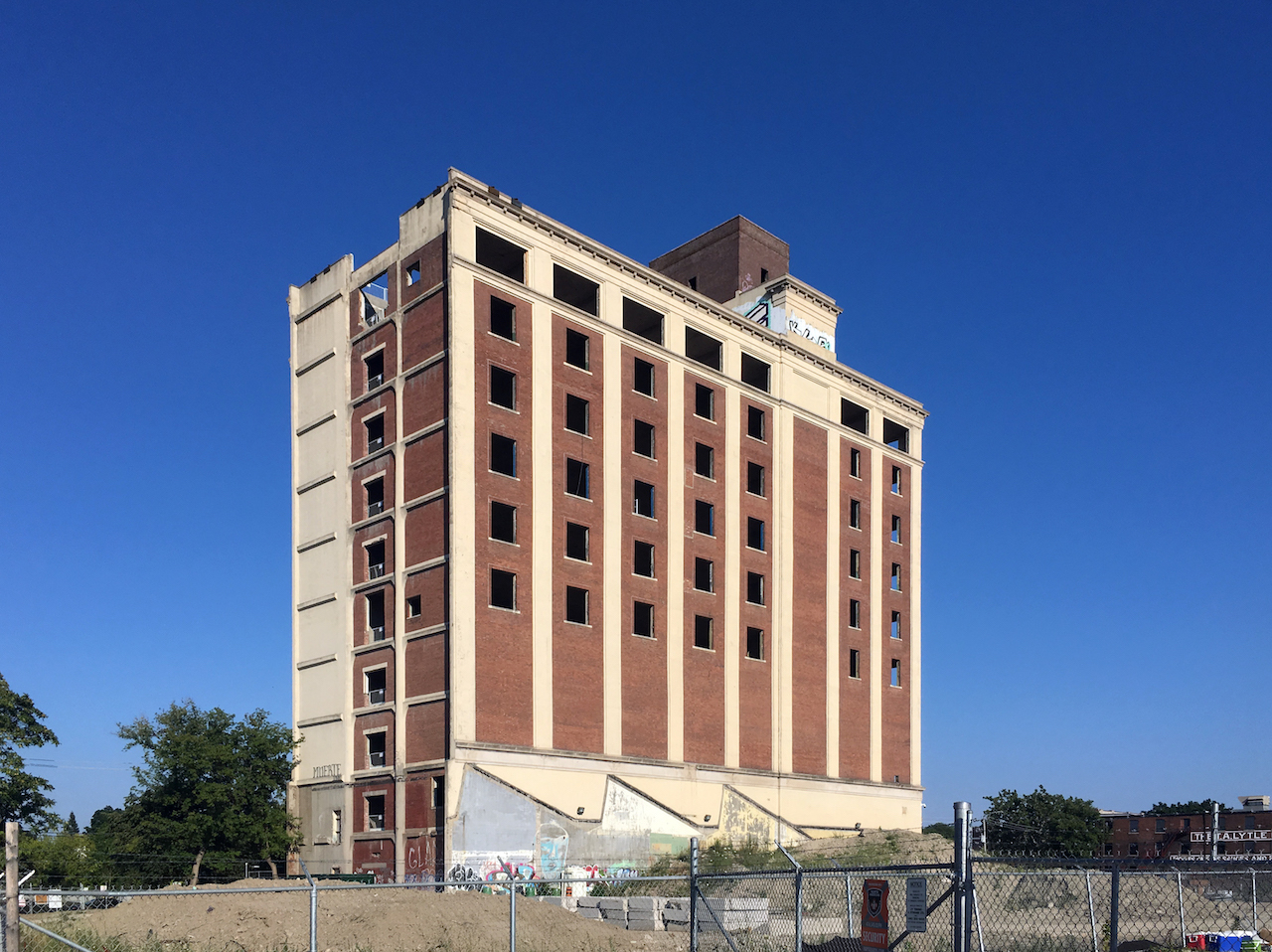 Museum FLTS. will rise just north of the tower (left), image by Stefan Novakovic
Museum FLTS. will rise just north of the tower (left), image by Stefan Novakovic
In 2014, however, City Council approved an ambitious mixed-use redevelopment plan for the area. Spearheaded by developer Castlepoint Numa—in collaboration with Greybrook Capital—the redevelopment they have dubbed 'Lower JCT.' will transform the 8 acres surrounding the landmark Tower Automotive Building. In the works since 2008, the redevelopment plan will bring 1,000 residents and 2,500 jobs to the industrial corridor at Sterling Road and Perth Avenue.
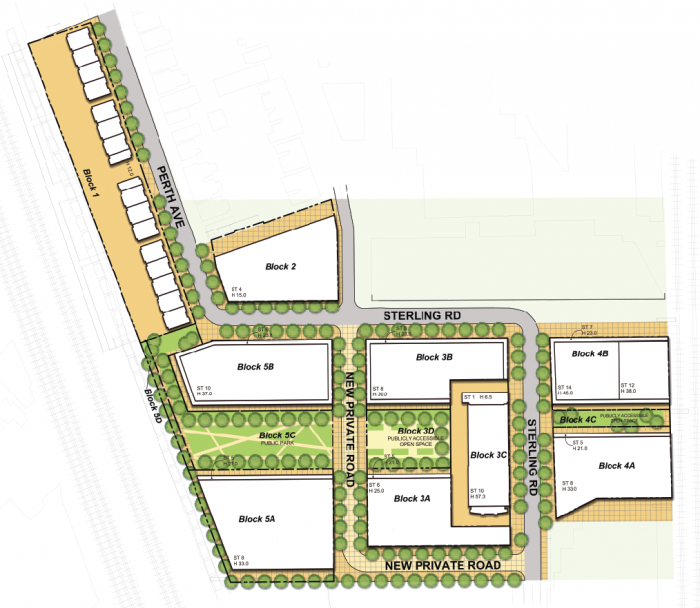 Site plan, including Museum FLTS.(3B) and West TWNS. (1), image courtesy of Castlepoint Numa
Site plan, including Museum FLTS.(3B) and West TWNS. (1), image courtesy of Castlepoint Numa
Having secured a 40-year lease at the Tower Automotive Building, MOCA is set to anchor the young neighbourhood, with the museum opening in 2017. MOCA will occupy five floors of the 10-storey tower, which is being reinvented by architectsAlliance. Complemented by numerous galleries as well as small-scale manufacturers and craftspeople that are coming to the area, the museum will bring a marquee cultural presence to the community.
 West TWNS. are coming to the west side of Perth Ave. (left), image via Google Maps
West TWNS. are coming to the west side of Perth Ave. (left), image via Google Maps
Meanwhile, the first phases of Castlepoint Numa's residential community have now launched. Along the west side of Perth Avenue, the TACT-designed West TWNS. are joining the row of tightly packed single-family homes across the street, filling in an intimate streetwall (above).
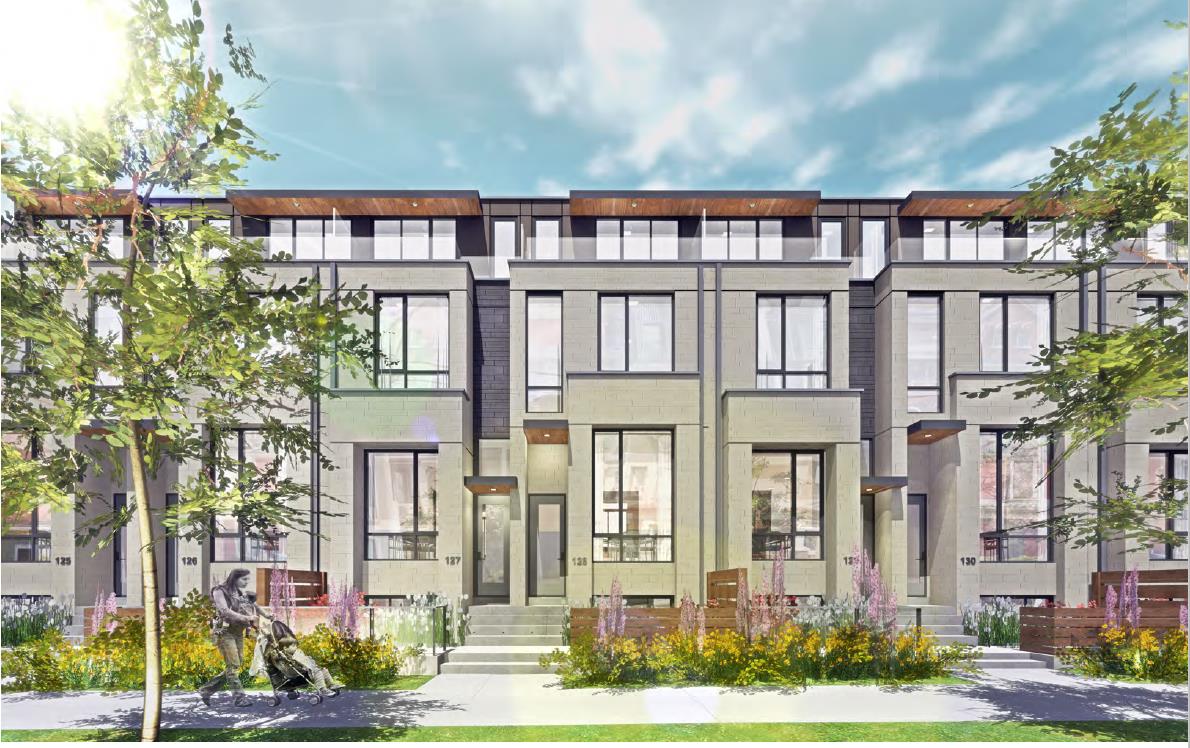 West TWNS., image courtesy of Castepoint Numa
West TWNS., image courtesy of Castepoint Numa
To the south, a 10-storey condominium called Museum FLTS. is now launching, with the building set to rise on Sterling Road, directly adjacent to MOCA's new home. Hosted at the neighbouring Junction Gallery—located in a former industrial building at 213 Sterling Road—the project's official launch offered full overview of the architectsAlliance-designed building. Featuring over 150 residential units, Museum FLTS. is strongly characterized by a grid of perforated aluminum panels, which enclose part of most balcony/terrace spaces to create 'outdoor rooms.'
 Museum FLTS. image courtesy of Castlepoint Numa
Museum FLTS. image courtesy of Castlepoint Numa
Most suites—which are offered in one, two, and three-bedroom configurations—feature both an outdoor room and a balcony space. According to Castlepoint President Alfredo Romano, this configuration allows for a greater variety of uses, with the semi-enclosed outdoor spaces providing a more private, living room type of environment. "People keep asking me, what's it gonna look like from there? Well, here, this is what it's going to look like," Romano tells me, gesturing me towards him as he places a cut-out of the pattern against the gallery window.
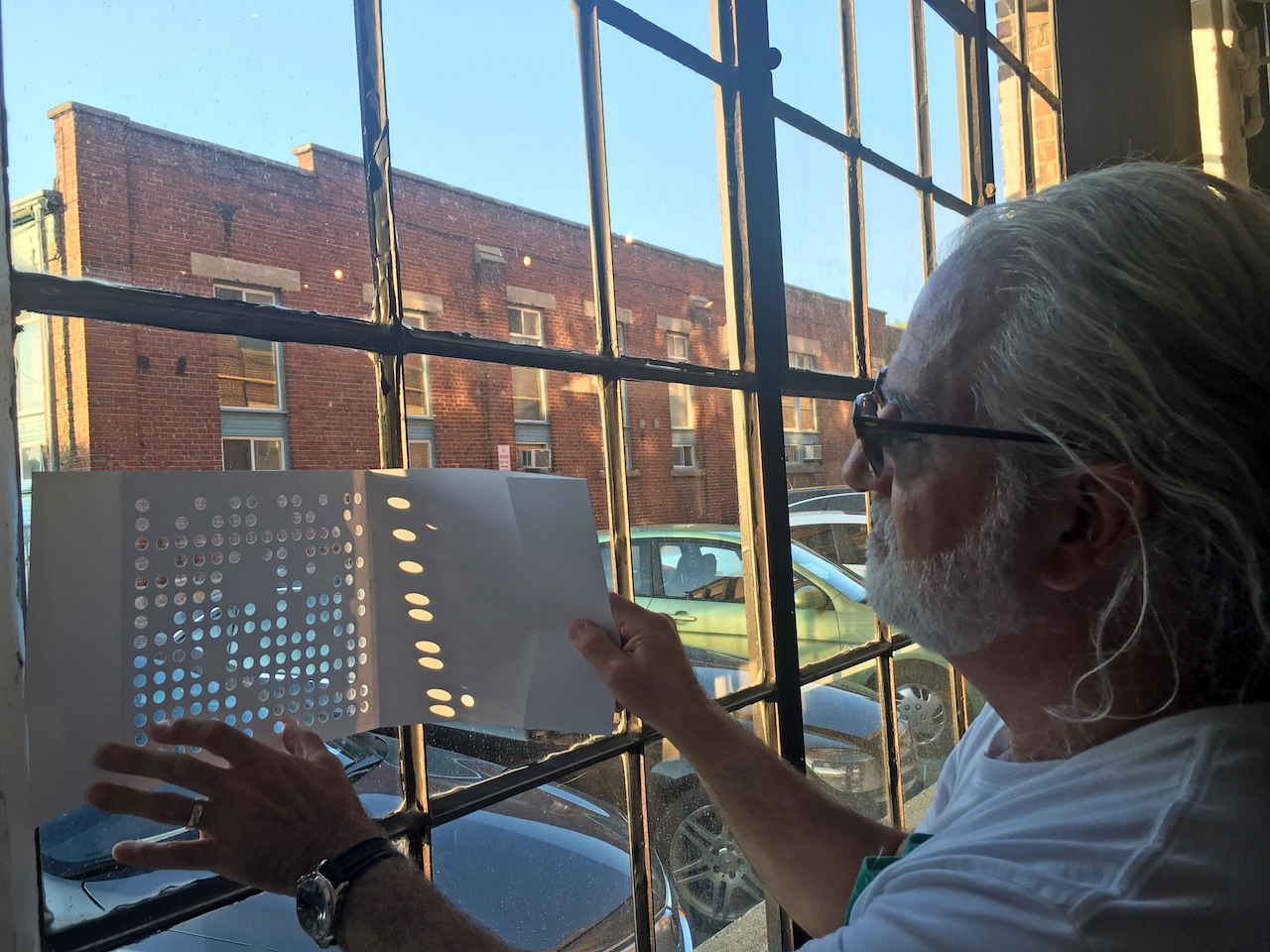 Alfredo Romano demonstrates the outdoor room, image by Stefan Novakovic
Alfredo Romano demonstrates the outdoor room, image by Stefan Novakovic
Romano adds that the anodized aluminum panels are meant as both a nod to the area's industrial past (an aluminum plant once occupied much of the site) and a wink at the tech-driven present. "The colour is the same as the aluminum on the gold iPhone." Alongside the subtly playful design, Romano stresses a strong commitment to the area's livability and mixed-use vibrancy. While a number of the suites and amenities appeal to families—one lounge space is also specifically dedicated to adolescents, a demographic rarely catered to in condominium living—the inclusion of a daycare space alongside the building should help create a more complete community.
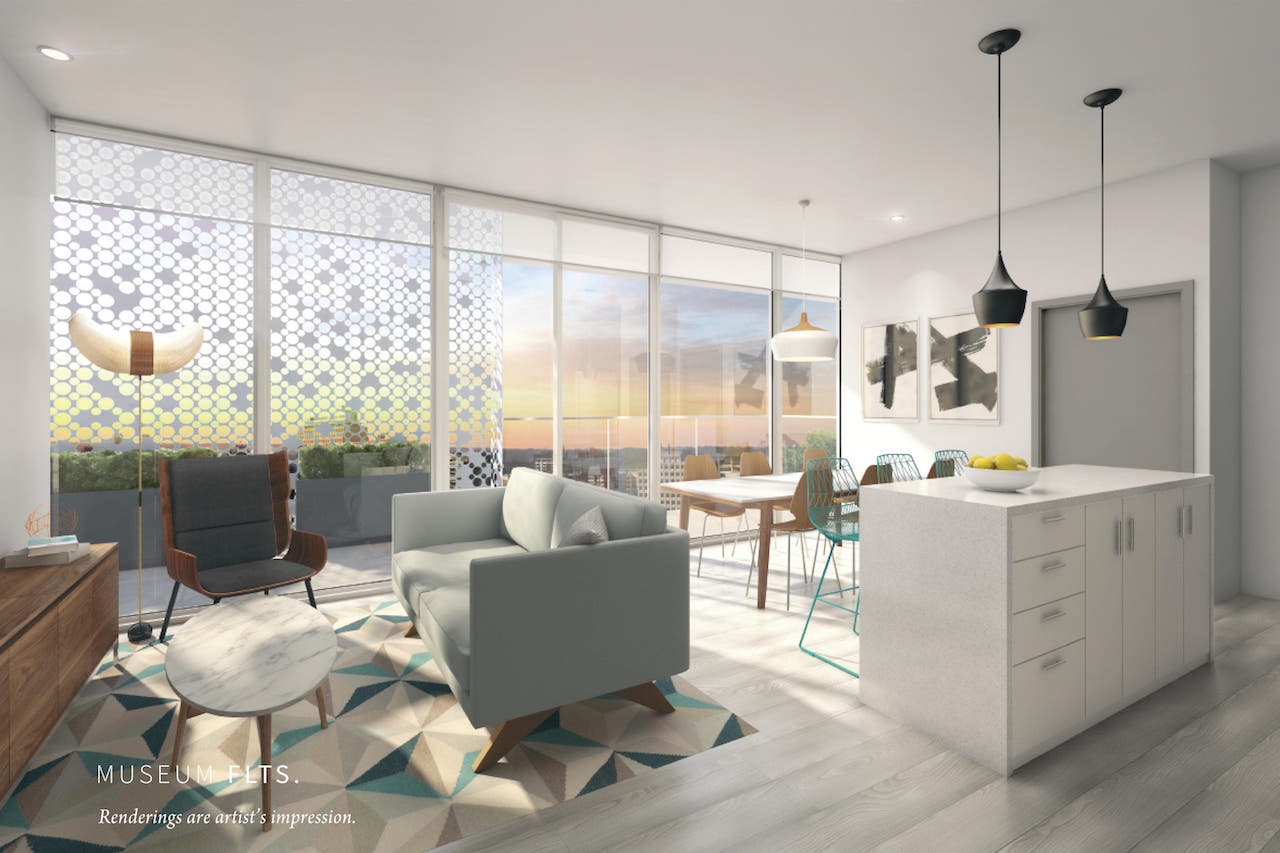 A view of the interior, showing both the outdoor room and balcony, image courtesy of Castlepoint Numa
A view of the interior, showing both the outdoor room and balcony, image courtesy of Castlepoint Numa
In addition to the requisite condominiums—which, like Museum FLTS., will feature ample ground-level retail space—the neighbourhood is also being planned as an employment hub. The 560,000 ft² of commercial space will be geared towards independent retailers and small-scale, boutique manufacturers, joining the industrial manufacturers which will remain in place to the south. "We've recently secured a craft chocolatier," says Romano, "which ships out to places all over the world." Buffering the residents from the industry to the south, three fully commercial structures are planned south of the Tower Automotive Building.
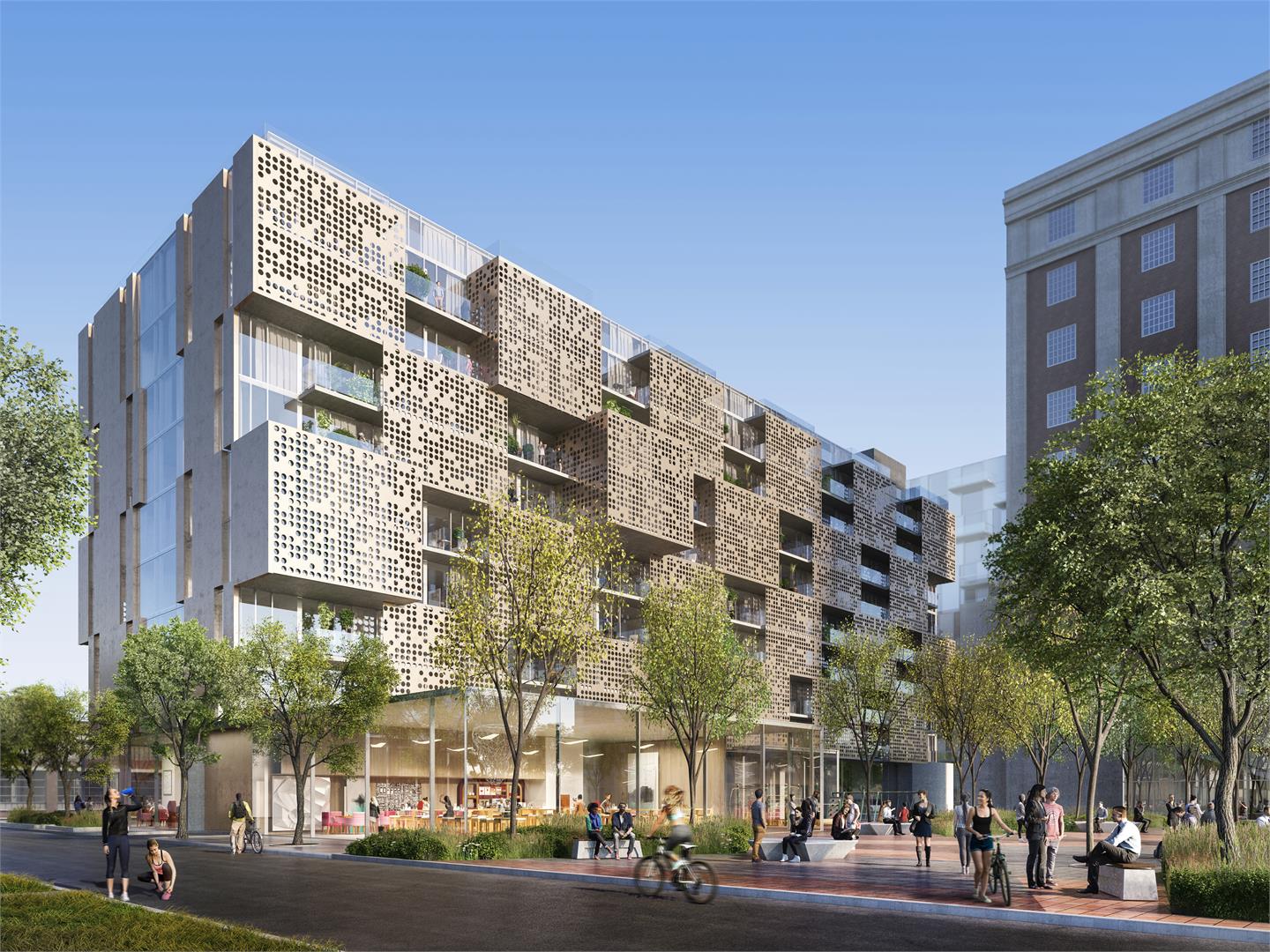 Museum FLTS. will front a POPS space to its west, image courtesy of Castlepoint Numa
Museum FLTS. will front a POPS space to its west, image courtesy of Castlepoint Numa
A new public park—and a number of POPS spaces—will provide green space to the community, while a new private road will help to fill out a somewhat more urban street grid. As future phases of the redevelopment take shape, Romano notes that a diversity of architectural typologies is sought. "Peter Clewes [of aA] is designing this building," he tells me, "but he won't be designing any others." As in many of today's master-planned communities, the idea is to recreate the varied urban texture of an established neighbourhood.
With Lansdowne and Dundas West stations within walking distance—as well the UPX's Bloor stop—the area is also well-served by transit, with the College and Dundas streetcars also a short walk to the south. Combined with the community's growing cultural prominence, the area's development appeal is obvious. The condominiums and boutique, high-end retailers will come, and, if the Lower Junction Triangle gets built out as imagined, it could be a very pleasant place to live.
***
Yet, as young professionals and third wave espresso bars come to inhabit the area, what will happen to the artists and the galleries? With the neighbourhood's era of low rents and vacant post-industrial buildings soon coming to a close, how can the local arts community remain in place? Romano's answer is simple, and surprisingly convincing. "The one thing that people almost never talk about is the importance of owning the space," he explains. "Across much of the City, artists and gallerists are driven out by higher rents, but here, many of them own their spaces. Whenever I talk to gallerists, I encourage them to buy the space," Romano adds, noting that the area's relative affordability still makes studio ownership feasible. "The fact that MOCA has signed a long-term lease is also key. It helps anchor that identity."
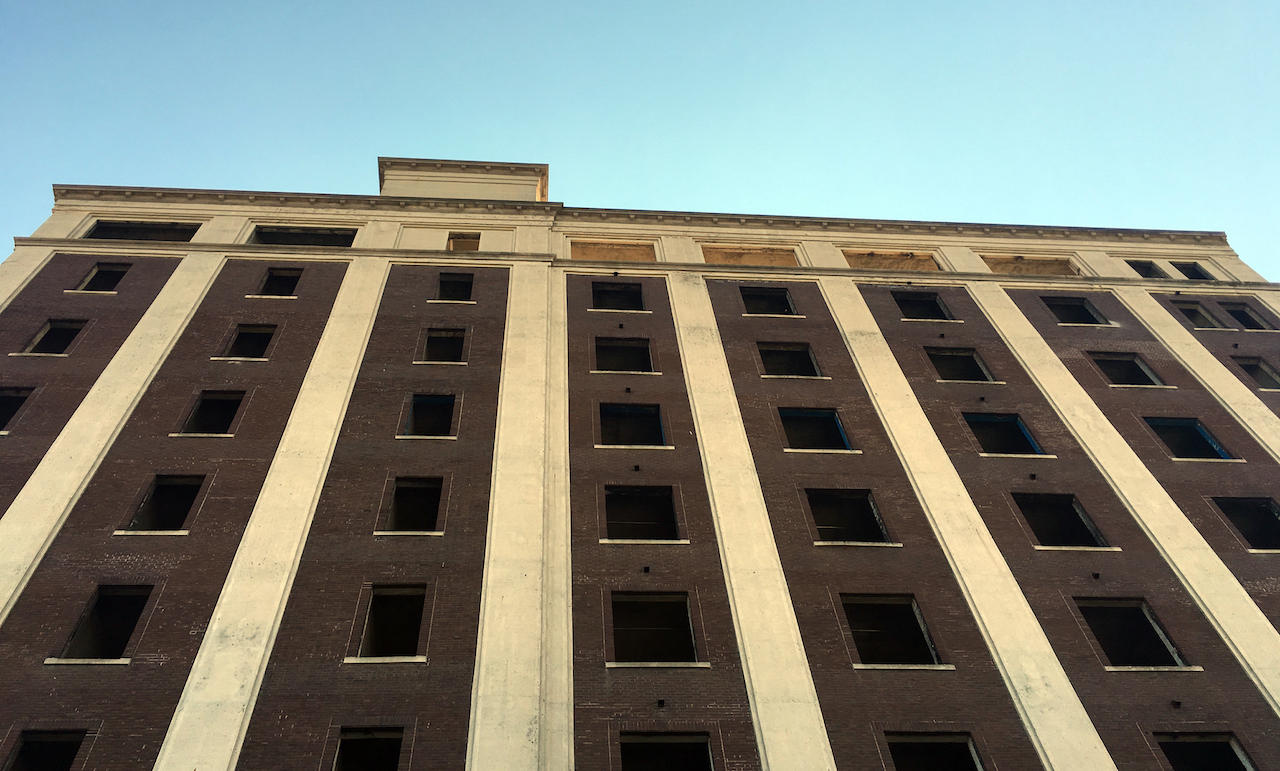 Looking up the hollow tower, image by Stefan Novakovic
Looking up the hollow tower, image by Stefan Novakovic
Like the dilapidated Victorian buildings that nourished 'new ideas' throughout much of the 20th century in North America, the newer warehouses and factories in neighbourhoods like the Lower Junction have become incubators of creativity. And, like Toronto's old Victorian houses—many of which are now highly sought after luxury homes—structures like the Tower Automotive Building are now quickly becoming fetishized in their own right. For the Lower Junction Triangle, however, the hope is that ownership and long-term leases will lend the local arts community some resiliency.
Still, the neighbourhood that emerges will transform the community that exists now. Urban metabolism ensures neighbourhoods don't stay the same. In the Lower Junction, the empty plots of land will be well served by new density, which, incidentally, contributes to the new housing supply that can help keep market prices lower. In this case, the redevelopment plan also seems like a fairly good one, with attention shown to diverse architectural typologies, public space, the arts community, and—in particular—employment uses, all while existing factories can continue operating to the south.
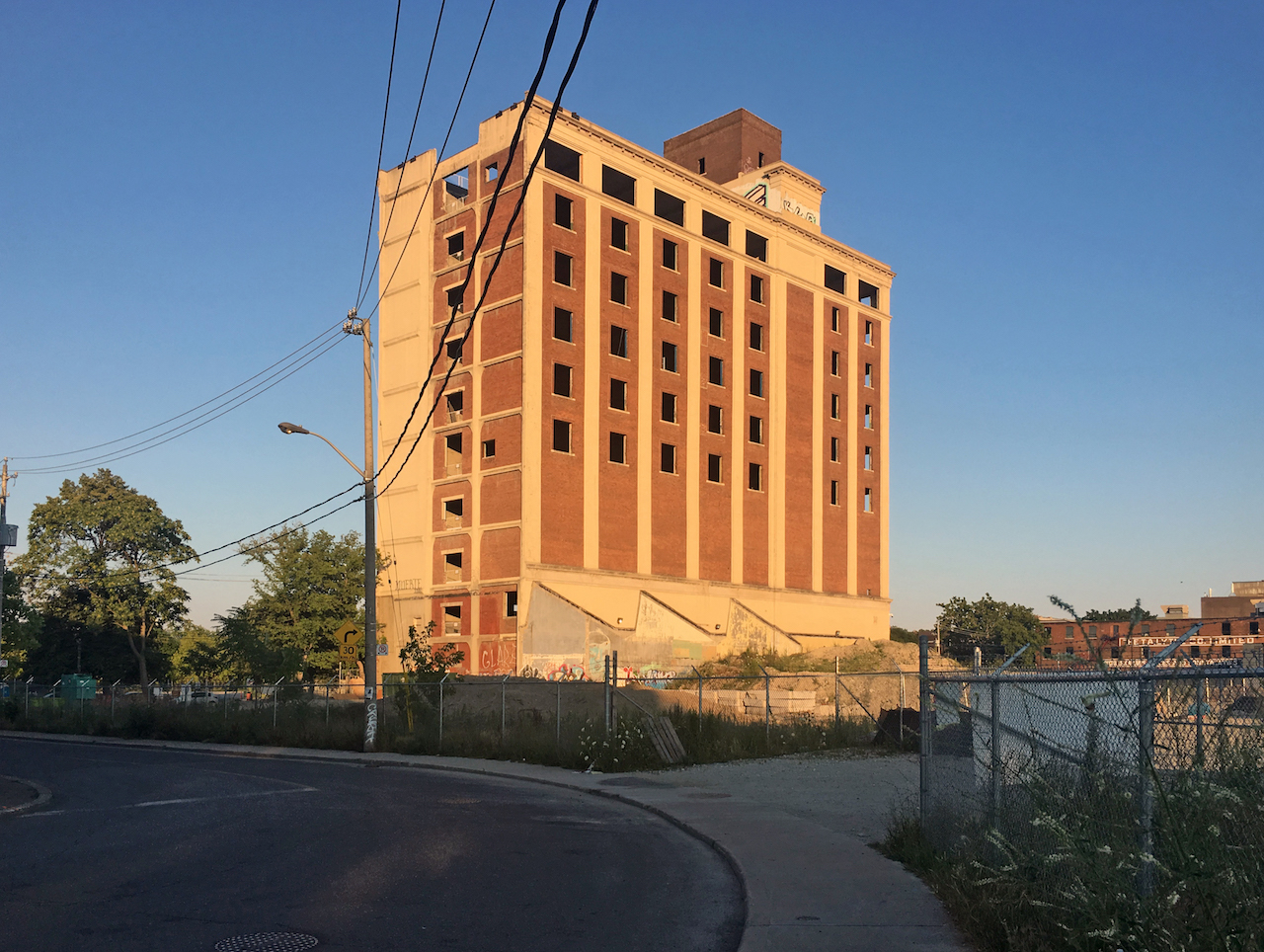 The tower is currently surrounded by vacant land, image by Stefan Novakovic
The tower is currently surrounded by vacant land, image by Stefan Novakovic
With all this in mind, can the neighbourhood continue to draw in artists? Will it still be such an affordable place for a new gallery in 10 years, in 20? Probably not. Even now, as MOCA prepares to move into the Tower Automotive Building, the hollow structure can no longer be a canvas for the graffiti artists that paint it. "Floor to floor, graffiti writers with names like Hunger, Fathom, Mesok, Rons, Elicser and Adore tried and tried again, tagging their works with each other’s names and the names of their various crews," the Toronto Star's Murray Whyte writes.
Redevelopment or not, much of the change is inevitable as the city transforms. After all, the skyrocketing rent prices on Queen West helped give rise to a new artistic hub in the Lower Junction, just as the 2005 closure of Tower Automotive paved the way for the graffiti culture of the next decade. The arts community there now is itself a product of change. However, though change can't be prevented, it can be channelled to create vibrant, diverse, and inclusive new environments that respect their pre-existing residents. In the Lower Junction, there's plenty of reason to hope that's exactly what will happen.
***
We will keep you updated as the lower Junction Triangle continues to take shape. In the meantime, more information about West TWNS. and Museum FLTS. is available via our dataBase files, linked below. Want to share your thoughts about the developments changing the neighbourhood? Leave a comment in the space provided on this page, or join in the ongoing conversations in our associated Forum threads.
EDITOR'S NOTE: This article was amended to reflect that MOCA is now leasing five floors of the Tower Automotive Building, not three.
| Related Companies: | architects—Alliance, Castlepoint Numa, Greybrook Realty Partners, Urban Strategies Inc. |

 2.2K
2.2K 



